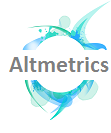Downloads
Abstract
In the context of the Fourth Industrial Revolution and the rapid growth of online learning, the flipped classroom model has transformed teaching and learning by inverting the traditional pedagogical process. Learner autonomy is emphasized through pre-class engagement with videos and materials, while the instructor's role shifts from knowledge provider to facilitator. Class time is then dedicated to practical activities, interaction, and problem-solving under the teacher's guidance. To ensure comprehensiveness and transparency, this systematic review employs the PRISMA framework with its 4-phase flow diagram: identification, screening, exclusion, and eligibility. A total of 19 articles published between 2014 and 2024 were identified through relevant keywords from Scopus, Google Scholar, and ERIC databases. The findings highlight the advantages of this model, including flexibility in time and space, self-directed learning, enhanced creativity, optimized in-class activities, development of language skills, critical thinking, and digital literacy. Concurrently, the disadvantages of this model are also identified such as workload pressures, dependence on technology and internet access, time management and self-learning skills, the quality of learning resources, learning environment limitations, and other individual learner factors.
Issue: Vol 9 No 3 (2025)
Page No.: 3078-3092
Published: Jul 17, 2025
Section: Reviews - Arts & Humanities
DOI: https://doi.org/10.32508/stdjssh.v9i3.1097
PDF = 15 times
Total = 15 times

 Open Access
Open Access 








